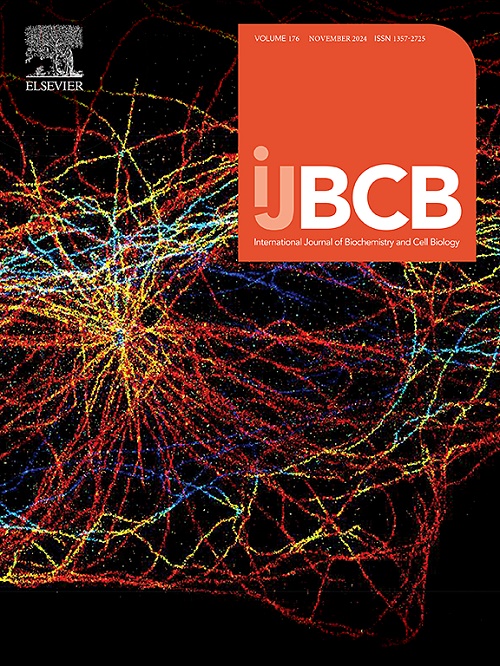抗原呈递细胞在特应性皮炎中协调混合炎症内型。
IF 2.8
3区 生物学
Q2 BIOCHEMISTRY & MOLECULAR BIOLOGY
International Journal of Biochemistry & Cell Biology
Pub Date : 2025-08-15
DOI:10.1016/j.biocel.2025.106850
引用次数: 0
摘要
特应性皮炎(AD)是一种慢性炎症性皮肤病,其发病机制复杂,涉及多种免疫反应的异常激活。近年来,靶向生物制剂由于其精确的作用机制,在治疗中重度AD方面显示出显著的疗效。然而,阿尔茨海默病复杂的炎症特征给单靶点生物制剂带来了挑战,导致治疗反应不理想。通过研究AD混合免疫内型的上游诱导机制,我们利用动物模型和基因缺陷小鼠,研究了三种类型的皮肤抗原呈递细胞(APCs)在AD发病机制中诱导不同炎症反应的作用。我们的研究结果表明,表皮朗格汉斯细胞主要识别过敏原,诱导Th2炎症,促进IgE的产生。Nlrp3有助于AD病变微生物群激活巨噬细胞,驱动Th17炎症和IgG1的产生。STING通路促进了树突状细胞的激活,加剧了AD混合免疫内型的整体炎症过程,并促进了IgG2a和IgG1的产生。综上所述,我们的研究全面分析了上游关键抗原呈递细胞及其调控途径,这些途径有助于ad相关免疫内型的进展。本研究为控制AD混合炎症过程的上游机制提供了有价值的见解,并为开发针对多种炎症途径的联合治疗提供了战略方向。本文章由计算机程序翻译,如有差异,请以英文原文为准。
Antigen-presenting cells orchestrate mixed inflammatory endotypes in atopic dermatitis
Atopic dermatitis (AD) is a chronic inflammatory skin disease characterized by a complex pathogenesis involving aberrant activation of multiple immune responses. In recent years, targeted biologics have demonstrated significant efficacy in treating moderate to severe AD due to their precise mechanisms. However, the complex inflammatory profile of AD poses challenges for single-target biologics, leading to suboptimal therapeutic responses. By investigating the upstream induction mechanisms of mixed immune endotypes of AD, our study examined the roles of three types of skin antigen-presenting cells (APCs) in inducing distinct inflammatory responses in AD pathogenesis, utilizing animal models and genetically deficient mice. Our findings revealed that epidermal Langerhans cells primarily recognize allergens, induce Th2 inflammation, and promote IgE production. Nlrp3 contributes to macrophage activation by the AD lesion microbiota, driving Th17 inflammation and IgG1 production. The STING pathway facilitates dendritic cell activation, exacerbates the overall inflammatory process across mixed immune endotypes of AD, and the production of IgG2a and IgG1. In summary, our study conducted a comprehensive analysis of the upstream key antigen-presenting cells and their regulatory pathways that contribute to the progression of AD-associated immune endotypes. This research provides valuable insights into upstream mechanisms for controlling AD mixed inflammatory processes and offers strategic directions for developing combination therapies targeting multiple inflammatory pathways.
求助全文
通过发布文献求助,成功后即可免费获取论文全文。
去求助
来源期刊
CiteScore
8.10
自引率
0.00%
发文量
124
审稿时长
19 days
期刊介绍:
IJBCB publishes original research articles, invited reviews and in-focus articles in all areas of cell and molecular biology and biomedical research.
Topics of interest include, but are not limited to:
-Mechanistic studies of cells, cell organelles, sub-cellular molecular pathways and metabolism
-Novel insights into disease pathogenesis
-Nanotechnology with implication to biological and medical processes
-Genomics and bioinformatics

 求助内容:
求助内容: 应助结果提醒方式:
应助结果提醒方式:


